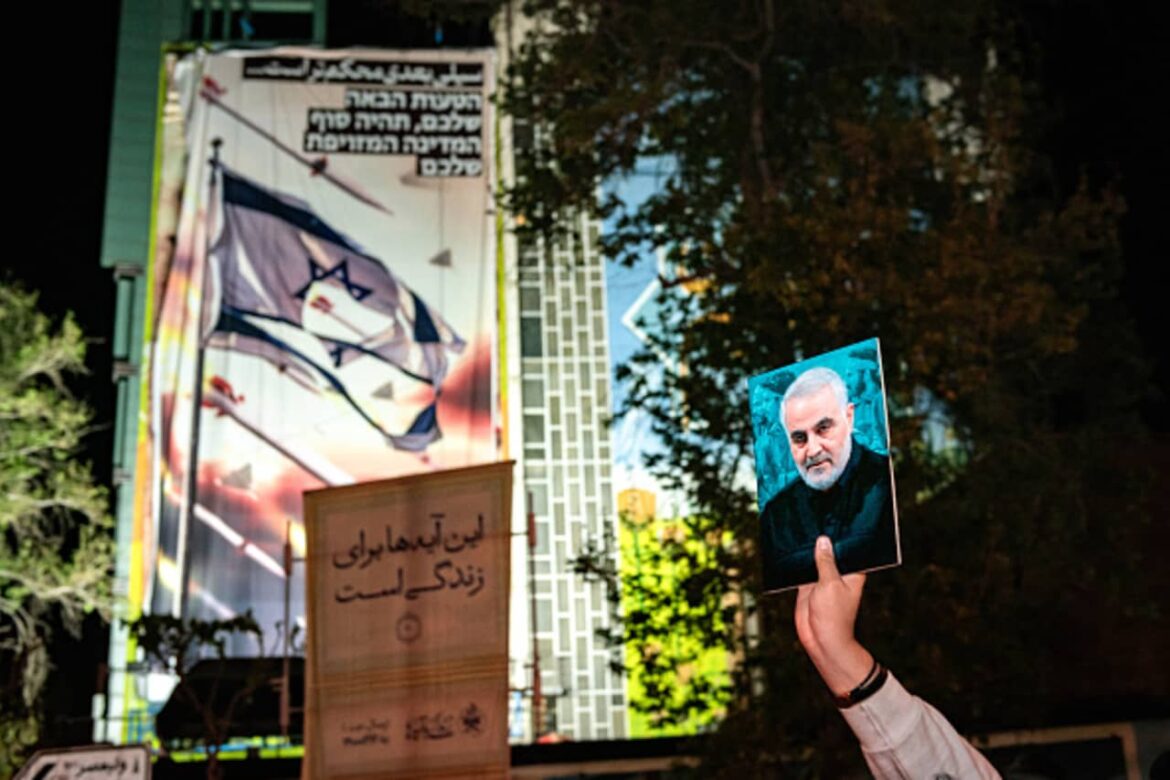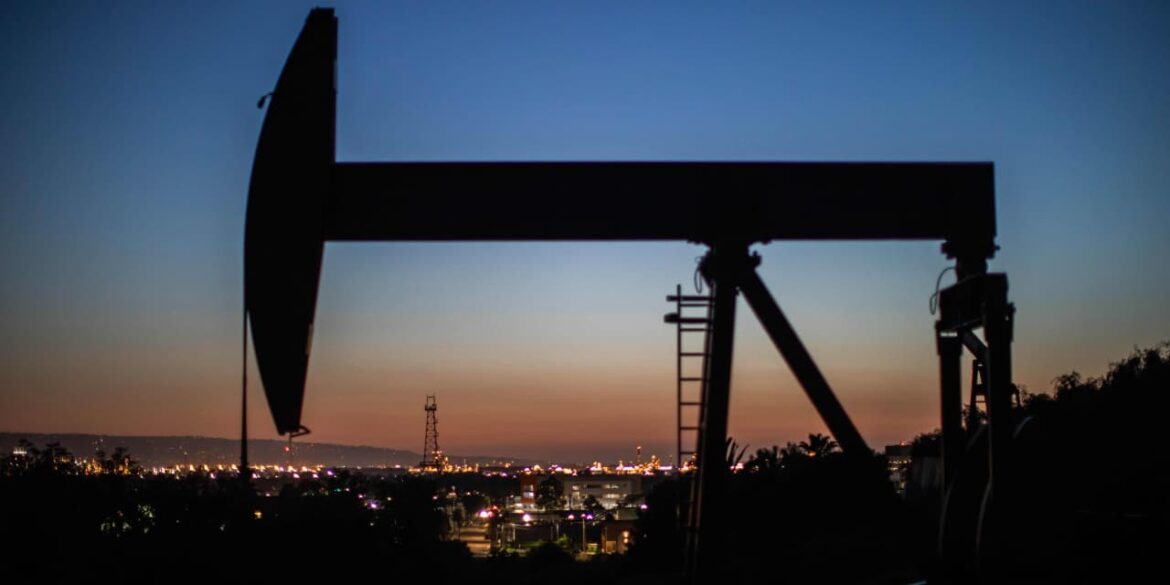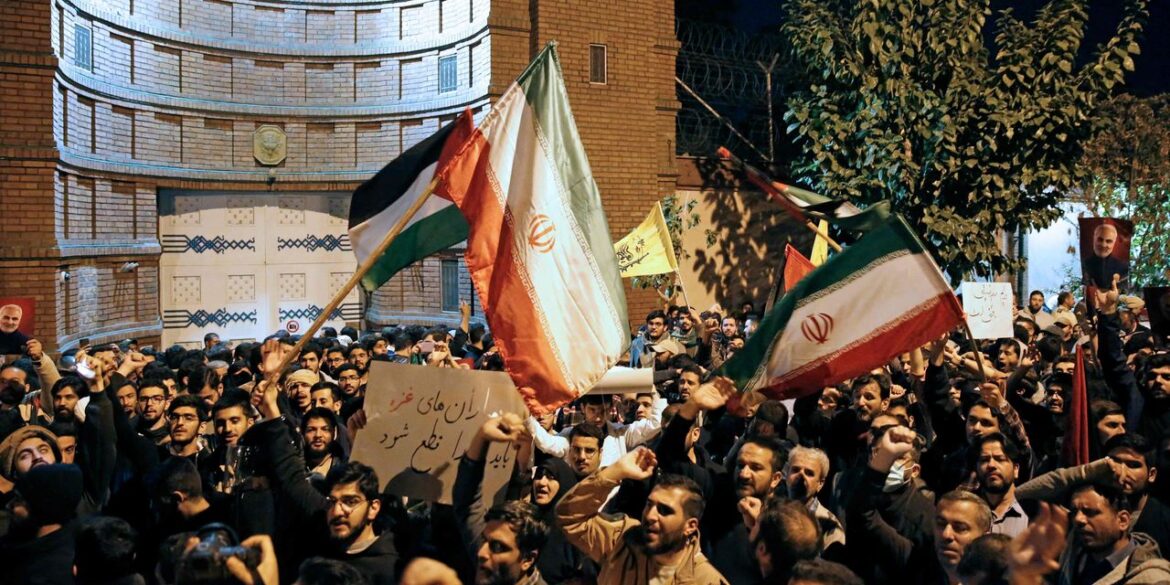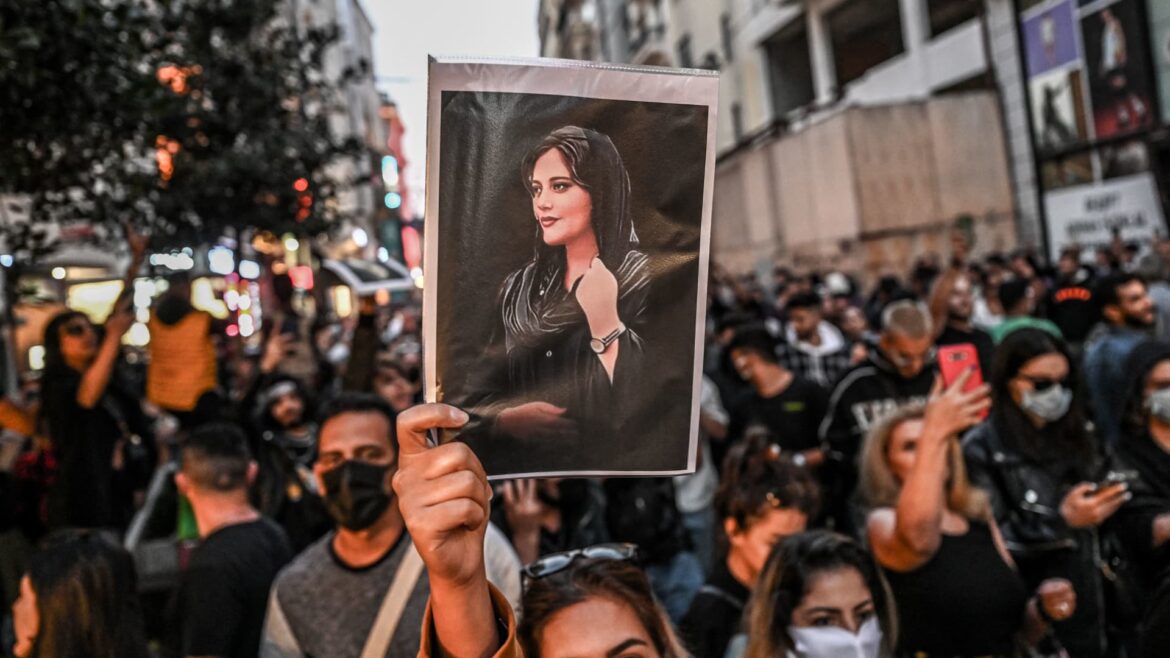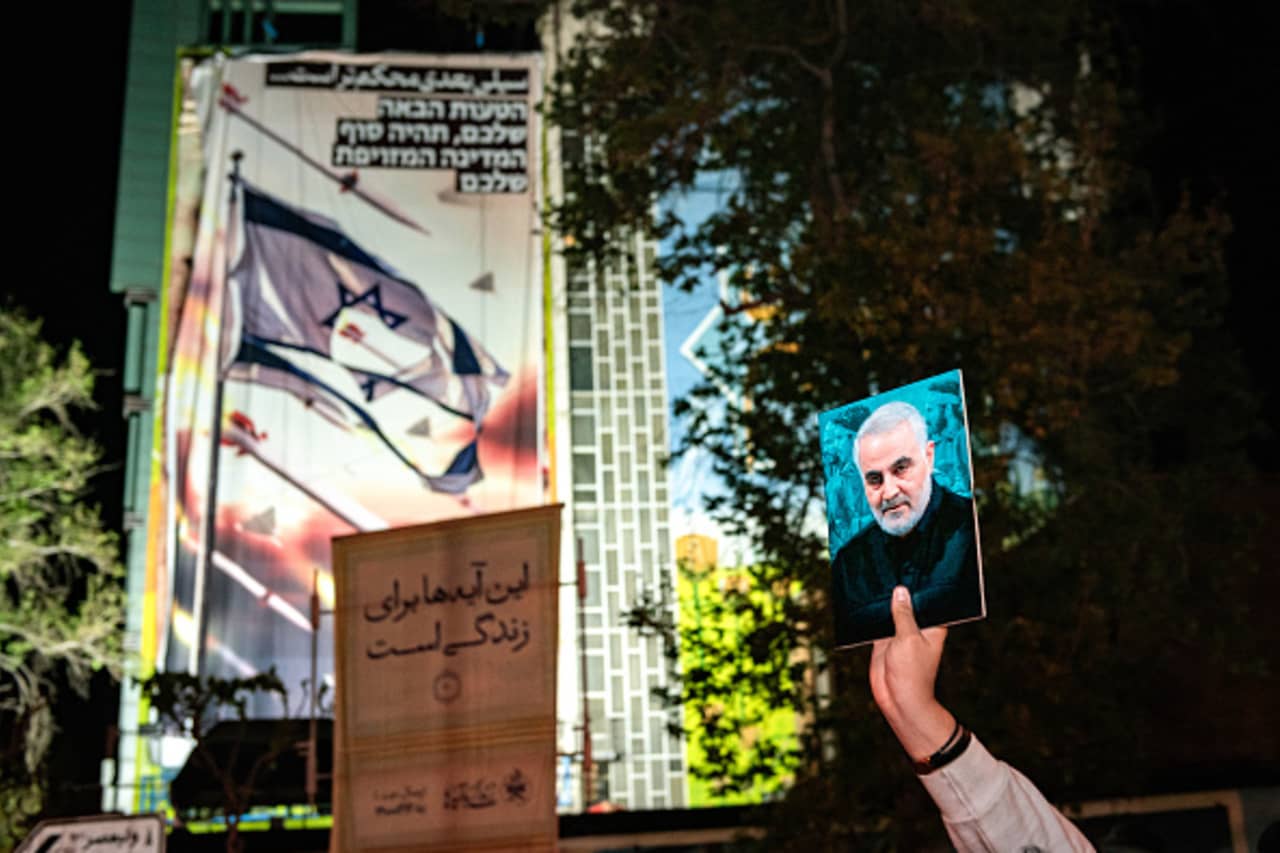
Oil prices probably won’t spike, but buy the yen if they do.
Source link
Iran
The price of Bitcoin took a nose dive on Saturday following reports of Iran launching missile and drone attacks on Israel. Alongside the market leader, many other prominent cryptocurrencies also experienced a significant selloff as news of a brewing international conflict in the Middle East circulated on the internet.
Bitcoin Suffers Major Decline For Second Consecutive Day
According to multiple reports on April 13, Iran commenced a drone attack against Israel in retaliation to an attack on an Iranian diplomatic building in Syria on April 1 which claimed the lives of nine Iranian officers, including a highly ranked general in Iran’s Islamic Revolutionary Guards.
This incident marked Iran’s first-ever direct assault on the Jewish state following years of rising political tensions between both countries. With the Iranian forces confirming further missile attacks on “specific targets” in Israel, it is likely that both nations may be heading for a full-scale war.
Following reports of the drone attacks in the Middle East, Bitcoin’s price dropped by 8.07%, falling from $67,132.1 to $61,710.58, reflecting a high selling pressure. Interestingly, this price action marked the second consecutive day the maiden cryptocurrency suffered a significant loss following a 5% decline on Friday amidst minor turbulence in the US stock markets.
Generally, Bitcoin has shown an underwhelming performance in the past weeks, recording a 12.51% loss in the last month based on data from CoinMarketCap. The maiden cryptocurrency has struggled to replicate its bullish form seen at the beginning of 2024 when it achieved a new all time high price of $73,750.07. However, with the Halving event fast approaching, BTC investors are likely optimistic about a potentially massive price gain in the coming months based on historical price data.
Currently, Bitcoin trades at $63,943, showing a 3.61% gain from its earlier slump on Saturday. In tandem, the token’s daily trading volume is up by 22.46% and valued at $57.37 billion.
Bitcoin trading at $63,971 on the daily chart | Source: BTCUSDT chart on Tradingview.com
Altcoins Not Spared From Market Crash
Alongside Bitcoin, the price of altcoins also decreased significantly due to the escalated geopolitical tension in the Middle East. Ethereum, the most popular altcoin and second largest cryptocurrency, suffered a loss of 10.89%, falling as low as $2,880.16
Meanwhile, other prominent tokens such as Solana (SOL), XRP, and Avalanche (AVAX) also recorded price dips to the tune of 12.68%,18.11%, and 16.00%, respectively. Generally, the total crypto market cap declined by 7.78%, falling to around $2.2 trillion.
Featured image from Shutterstock, chart from Tradingview
Disclaimer: The article is provided for educational purposes only. It does not represent the opinions of NewsBTC on whether to buy, sell or hold any investments and naturally investing carries risks. You are advised to conduct your own research before making any investment decisions. Use information provided on this website entirely at your own risk.
Oil prices rise as Iran sends warship to Red Sea after U.S. destroys Houthi vessels

Oil futures rose Tuesday to kick off the new year after an Iranian warship entered the Red Sea, heightening tensions and fears of crude supply disruptions sparked by attacks on shipping by Iran-backed Houthi rebels in Yemen.
Price action
-
West Texas Intermediate crude for February delivery
CL00,
+2.37% CL.1,
+2.37% CLG24,
+2.37%
rose $1.71, or 2.4%, to $73.36 a barrel on the New York Mercantile Exchange. -
March Brent crude
BRN00,
+2.19% BRNH24,
+2.19% ,
the global benchmark, was up $1.86, or 2.4%, at $78.90 a barrel on ICE Futures Europe. -
Back on Nymex, February gasoline
RBG24,
+2.52%
rose 2.4% to $2.156 a gallon, while February heating oil
HOG24,
+2.06%
was up 2% at $2.58 a gallon. -
February natural gas
NGG24,
+4.38%
rose 4% to $2.615 per million British thermal units.
Market drivers
News reports said Iran’s semiofficial Tasnim news agency on Monday reported that Iran’s Alborz warship had entered the Red Sea without providing details of the ship’s mission.
The U.S. military said Sunday that its forces opened fire on Houthi rebels after they attacked a cargo ship in the Red Sea, killing several of them and destroying three boats in an escalation of the maritime conflict linked to the war in Gaza.
Oil prices rose after the start of the Israel-Hamas war in October, but the risk premium attached to fears of a wider conflict in the region soon evaporated. Crude has seen periodic jumps in price around fears of potential escalation, but fell sharply over the course of the fourth quarter, with both Brent and WTI ending 2023 with a year loss, their first since 2020.
Uncertainty over the demand outlook, a rise in U.S. production to record levels above 13 million barrels a day and doubts about the unity of the Organization of the Petroleum Exporting Countries have served to undercut support for crude.
With demand “expected to remain subdued due to a global economic slowdown and U.S. crude production at record levels, the recovery may be destined to remain limited and short lived,” said Charalampos Pissouros, senior investment analyst at XM, in a note.
Oil settles at more than 2-week high after deadly Gaza hospital blast, with Iran reportedly calling for Israel oil embargo
Oil prices settled Wednesday at their highest in more than two weeks, following a blast at a hospital in Gaza City that left hundreds dead and ratcheted up regional tensions, with Iran reportedly calling for an embargo on selling oil to Israel.
Signs of tightening U.S. crude supplies also helped lift prices.
Price action
-
West Texas Intermediate crude
CL00,
+1.99%
for November delivery
CL.1,
+1.75% CLX23,
+1.75%
rose $1.66, or 1.9%, to settle at $88.32 a barrel on the New York Mercantile Exchange. Prices for the front-month contract marked its highest finish since Oct. 3, according to Dow Jones Market Data. -
December Brent crude
BRN00,
-0.20% BRNZ23,
-0.20%
the global benchmark, gained $1.60, or 1.8%, to $91.50 a barrel on ICE Futures Europe, the highest since Sept. 29. -
November gasoline
RBX23,
+3.04%
added 3% to $2.35 a gallon, while November heating oil
HOX23,
-1.24%
fell 1.2% to $3.14 a gallon. -
Natural gas for November delivery
NGX23,
-0.75%
settled at $3.06 per million British thermal units, down nearly 0.8%.
Market drivers
“Price action shows the risk of trading a potential but unrealized supply disruption,” said Troy Vincent, senior market analyst at DTN.
Oil moved higher “on the back of knee jerk reactions to headlines involving the words ‘oil embargo’ out of Iran that, in reality, should have been ignored and hold very little weight in the broader market,” he told MarketWatch.
An explosion tore through a Gaza City hospital on Tuesday filled with wounded and other Palestinians seeking shelter from ongoing war, with the death toll at 500 and rising, the Hamas-run Health Ministry said. Hamas has blamed the blast on the Israeli military, which in turn said the cause was a misfired rocket from a Gaza-based militant group.
Benjamin Picton, senior macro strategist at RaboResearch told clients in a note on Wednesday that following the tragedy, there’s a rising risk of “further escalation from Iran and Hezbollah, the former vowing a ‘harsh response,’ even including against the U.S., and the latter announcing a day of ‘unprecedented anger’ today.”
As anger spread through Arab region, Jordan canceled a planned Arab summit with President Biden, who touched down in Israel on Wednesday. Jordan’s foreign minister Ayman Safadi told state-run television that the nearly two-week old war was “pushing the region to the brink.”
Read: Biden tells Netanyahu it appears ‘the other team’ caused Gaza hospital blast
Crude prices have risen since the Oct. 7 attack by Hamas on southern Israel on fears that if Iran enters the conflict, the U.S. could increase enforcement of sanctions that would curb exports and further tighten global supplies. Iranian production has crept up to more than 3 million barrels a day, while analysts have pegged exports at around 2 million barrels a day.
Iran’s foreign minister, Hossein Amirabdollahian on Wednesday called for members of the Organization of Islamic Cooperation (OIC) to stop selling oil to Israel oil and expel its ambassadors, Reuters reported. The OIC was holding an emergency meeting in Jeddah on Wednesday.
“While it is very unlikely that other nations will join in Iran’s call for an embargo, even talk of such a move puts focus on Iran’s oil production and exports, which are in grave risk of being taken out of the reliable supply mix,” said Phil Flynn, senior market analyst at The Price Futures Group.
Naeem Aslam, chief investment officer at Zaye Capital Markets, said it’s also important to note that Russian President Vladimir Putin visited China on Wednesday while Biden was in Israel.
“These are significant events from an oil supply perspective and the situation is changing by the hour,” he said.
Read:70% chance Israel-Hamas war spreads beyond Gaza, threatening oil, strategist warns
Also: Biden says he’ll ask Congress for ‘unprecedented support package’ for Israel’s defense
Supply data
Oil also found support after industry data showed a fall in U.S. crude supplies.
The Energy Information Administration on Wednesday reported that U.S. commercial crude inventories fell by 4.5 million barrels for the week ended Oct. 13.
On average, analysts polled by S&P Global Commodity Insights expected the report to show a small decline of 30,000 barrels. The American Petroleum Institute late Tuesday reported that U.S. crude stocks fell 4.4 million barrels last week, according to a source citing the data.
The EIA report also revealed supply declines of 2.4 million barrels for gasoline and 3.2 million barrels for distillates. Analysts forecast inventory decreases of 800,000 barrels for gasoline and 900,000 barrels for distillates.
Crude stocks at the Cushing, Okla., Nymex delivery hub fell by 800,000 barrels for the week, the EIA said, while U.S. production remained at a record high of 13.2 million barrels a day.
Read: U.S. oil production hits record as Israel-Hamas conflict stokes global supply fears
William Watts contributed to this report
A protester holds a portrait of Mahsa Amini during a demonstration in support of Amini, a young Iranian woman who died after being arrested in Tehran by the Islamic Republic’s morality police, on Istiklal avenue in Istanbul on Sept. 20, 2022.
Ozan Kose | AFP | Getty Images
Roughly one year ago, the death of a young Kurdish Iranian woman named Mahsa Amini in police custody lit the fuse that would set off months of protests that rocked Iran and its hardline government, creating the greatest challenge to its rule in decades.
Amini, just 22 years old, was arrested for allegedly improperly wearing her hijab, the headscarf women are required to wear under Iran’s highly conservative Islamic Republic. She died after allegedly suffering multiple blows to the head. Iranian authorities claimed no wrongdoing and said Amini died of a heart attack; but her family, and masses of Iranians, accused the government of a cover-up.
The protests spread across the country and evolved from being focused on women’s rights to demanding the downfall of the entire Iranian regime. They led to severe crackdowns and frequent internet blackouts by Iranian authorities, as well as thousands of arrests and several executions.
But what many people hoped would become a full-on popular revolution failed to shatter the regime’s hold on power; instead, the repression intensified. Still, resistance continues in varying forms, many Iranians say.
“One year on, Iranian protesters continue to show the world that they have and continue to risk life and limb by coming out against the Islamic Republic,” Behnam ben Taleblu, senior fellow at the Foundation for Defense of Democracies think tank, told CNBC.
“Iran’s violent suppression of protestors was merged with the regime’s weaponization of cyberspace and the judiciary,” he said, “all of which were mobilized in a failed bid to demoralize Iranians.”
CNBC has contacted the Iranian foreign ministry for comment and is awaiting a reply.
People gather in protest against the death of Mahsa Amini along the streets on September 19, 2022 in Tehran, Iran. Anti-government uprisings are to remain a sticking point and increase in frequency in Iran’s political landscape as dissatisfaction with other factors like the country’s economic conditions surface, according to analysts.
Getty Images | Getty Images News | Getty Images
Indeed, arrests, surveillance, and executions have reportedly picked up in the months since the protests — dubbed by many Iranians as the “Woman, Life, Freedom” movement – began.
Iranian authorities have ramped up pressure on peaceful dissidents ahead of the anniversary of Amini’s death, Human Rights Watch wrote in a mid-August report. That month, the independent women’s rights group Bidarzani reported raids on several homes by Iranian security forces that resulted in a dozen arrests of women’s rights activists and lawyers, it said.
An Iranian court charged the lawyer for Amini’s family, Saleh Nikbakht, with “propaganda against the state” for his work. He was released on bail pending a court hearing. Family members and lawyers of dissidents who were executed have also been arrested.
“Iranian authorities are using their go-to playbook of putting maximum pressure on peaceful dissidents ahead of the anniversary of Mahsa Amini’s death,” Tara Sepehri Far, a senior Iran researcher at Human Rights Watch, said in the organization’s report. “The arbitrary arrests of a dozen activists are aimed at suppressing popular discontent with ongoing impunity and rights violations.”
‘Letting our hair blow in the wind’
Despite the heavy handed measures of the state, women in many parts of Iran are refusing to wear the hijab. Photos and videos from cafes and shopping malls in Tehran show women out and about, hair uncovered.
“You can tell the big change is women aren’t backing down, and we are letting our hair blow in the wind,” one Iranian visiting her family in Tehran told CNBC. She spoke anonymously out of concern for her safety.
Women defying the hijab requirement still face significant risks. One recent instance reportedly involved a male taxi driver beating a female passenger for not covering her hair. Other consequences include arrest, fines, or serious physical attacks.
Businesses are also ordered by the government to turn away female customers that aren’t covering their hair, or risk facing closure; yet some businesses choose to shirk those orders as an act of solidarity with the women.

“Because a revolution hasn’t been set in motion doesn’t mean that the conditions on the ground and society haven’t somewhat changed and shifted,” Sanam Vakil, director of the MENA program at Chatham House, said during a recent podcast on the Iranian protests hosted by the European Council on Foreign Relations.
“What I really see happening inside Iran is, despite significant repression, regular crackdowns, surveillance and pressure on Iranian individuals and society writ large … we are seeing a regular pattern of protests that I think are important and show resistance.” Vakil also noted protest action beyond the anti-hijab movement, including angry demonstrations over water shortages, high inflation and economic pressure.
“Despite the state’s ability to continue to be repressive, people are at the same time, in different ways, fighting back,” she said.
A lack of organization
Iranian authorities are vocally vilifying the Mahsa Amini protests, revealing likely concern over potential unrest as the anniversary of her death approaches.
“As we are getting closer to the anniversary of the 2022 riots, rereading and identifying the nature of last year’s events is a necessity … The plotters of this war were the enemies and opponents of the Islamic Revolution, the rule of guardianship,” Brigadier General Yadollah Javani, chief of the Iranian Revolutionary Guard Corps’ political bureau, wrote in a state media outlet.
People hold up images and placards during a demonstration in honor of Jina Mahsa Amini and the other protesters killed at The Place Joachim du Bellay in Paris, on November 13, 2022.
Nurphoto | Nurphoto | Getty Images
Meanwhile, “you now regularly see people on the streets of Tehran and other cities not just without hijab but in tank tops,” Iranian historian and analyst Arash Azizi said. “But this is far from a consolidated achievement.”
Iran’s government has in fact recently imposed harsher hijab rules. “Its moral security police are back with their notorious vans patrolling streets; the very vans that arrested Mahsa,” Azizi said. “The regime has shown no sign of giving concessions.”
And despite having previously gathered thousands of people on the streets, “without political organization and leadership, the protests are very unlikely to lead to political change,” he said. “Iranians continue to sorely lack an organized alternative to the regime.”
But, Azizi noted, “even the regime’s own strategists admit that none of the fundamental problems that have led to constant protest since 2017 have been solved.”
“The regime’s economy continues to be in total tatters, its oppressive apparatus continues to dominate Iranian lives,” he said. “Resistance therefore continues.”
A motorcyclist has a drink from a bottle to cool off during a heat wave in Tehran on July 11, 2023.
Atta Kenare | Afp | Getty Images
Iran on Wednesday began a two-day nationwide shutdown because of soaring temperatures, shortly after the Islamic Republic’s health ministry warned of a possible increase in cases of heat exhaustion.
Government spokesman Ali Bahadori Jahromi on Tuesday said that “unprecedented heat” had forced the closures of governmental offices, banks and schools, according to the state-owned Islamic Republic News Agency.
The shutdown will cover the working weekdays of Wednesday and Thursday.
The health ministry was quoted by state media as saying that all medical centers nationwide would be on alert to treat people suffering from the heatwave. The ministry also warned that the shutdown may need to be extended to protect people’s health.
Many Iranian cities and towns have suffered from temperatures above 40 degrees Celsius (104 Degrees Fahrenheit) in recent days, while the oil-rich southwestern city of Ahvaz hit 50 degrees Celsius on Tuesday.
The capital city of Tehran experienced temperatures of 39 degrees Celsius on Wednesday.
The two-day shutdown comes at a time of extreme heat across the globe, with July poised to be the hottest month in history.
Water scarcity is a major issue for Iran, which has been in the grip of a widespread drought for over two years.
In late May, Iranian and Afghan border guards exchanged heavy gunfire amid rising tensions over regional water supplies, while protests broke out in 2021 over water shortages in the Khuzestan province.

